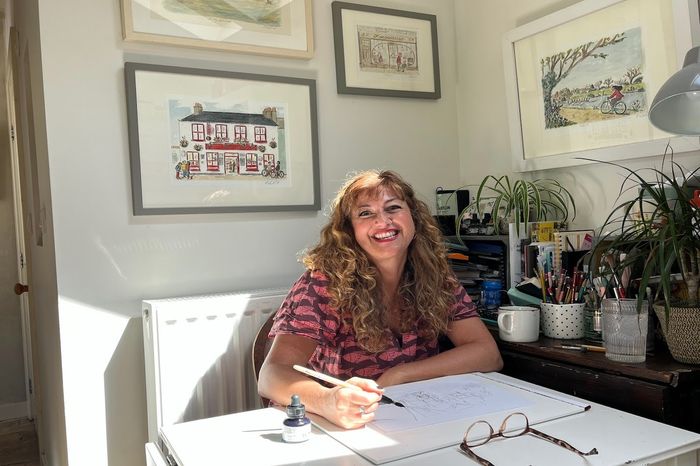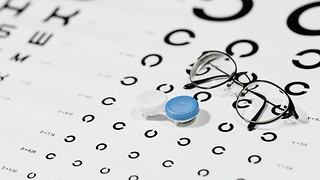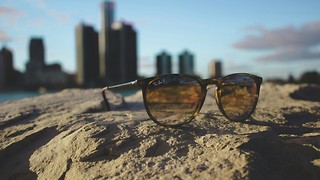Shame on you for art-shaming me!
In response to Kris Jenner, Mia Apfel explores the irony of art snobbery

Do you remember the episode of Keeping Up with the Kardashians where Kris Jenner ‘art-shamed’ Khloe Kardashian for not recognising a Jeff Koons? Most likely you do not, (which is perhaps only an embarrassing reflection of how many Kardashians seasons I have binge watched) so I shall summarise for you.
Unusual amid the show’s series of heated mother-daughter exchanges, Kris and Khloe’s argument is not one which revolves around the accustomed axis of petty drama but, rather, scrapes the surface of a whole new sphere, that of the art world. Khloe gestures to a ceramic gold figurine on Kris’s office shelf. “It’s a Jeff Koons. K-O-O-N-S,” Kris lectures her uninformed daughter, summarising the work of the American contemporary artist with the line “he’s famous for the Balloon dog.” “You need to go to, like, an art class,” she continues, shocked at Khloe’s inability to spot Koons’s unmistakable kitsch aesthetic and classic sculpture silhouette from a mile away. Punctuated by a minute’s silence of comedically over the top stareddown, the clip remains faithful to its reality-TV style. But out of the ridiculousness comes a kernel of truth. Khloe’s comebacks to her overbearing ‘momager’ hold a semblance of honest moral: “Just because I’m not as knowledgeable as you, you shouldn’t turn your nose up,” she calmly responds.
““You need to go to, like, an art class,” she continues, shocked at Khloe’s inability to spot Koons’ unmistakable kitsch aesthetic and classic sculpture silhouette from a mile away”
Arresting Khloe for her lack of art knowledge, Kris embodies the position of the ‘art police’, with the impression that her act of ‘art-shaming’ is necessary to uphold the laws of culture. But perhaps Kris is wrong to place such merit on the mere ability to recognise and name artists at face value.
Jeff Koons being the point of contention between the Kardashians is particularly amusing. No more is explained of his work other than a nod to the classic sculpture which surged his success. Known for his engagement with popular culture, Koons’s artwork has been perceived as breaking down the boundaries of artistic apprehension and acceptance. His series of stainless-steel balloon dog sculptures are themselves a conflicted subject within art criticism. Hated by some, adored by others, Koons gained attention in the 1980s through his efforts to challenge the strict law book of the culture world. Everyday objects – a vacuum cleaner, a chair, a basketball – became the centre of his creations.
“She criticises Khloe for not knowing an artist whose entire objective is to challenge the very cultural hierarchy which so values ‘knowing’ art in the first place”
Critics jab at the superficiality of his work, labelling him a symptom of a late-capitalist society, driven more by money or celebrity than true artistic inspiration. Many suggest the true problem is that his work is not ‘saying’ anything genuine. Yet such claims ironically prove the success of Koons’s pieces in achieving his intended message. Those who criticise confine themselves to the traditional gridlines of what art ought to be saying, how it ought to look, and for whom and what purpose it ought to be created. Koons forces his consumers to question the authoritative judgement on what we consider ‘good’ art, to query what we mean when we speak of ‘high’ culture. Whether or not his own art deserves inclusion in these definitions is a debate which he had started himself.
Returning to the Kardashian conflict, one can find an added irony in Kris’ judgement. Claiming cultural superiority, she criticises Khloe for not knowing an artist whose entire objective is to challenge the very cultural hierarchy which so values ‘knowing’ art in the first place.
I spoke to my STEM orientated sister, whose words, funnily enough, resembled exactly that of Khloe Kardashian’s. “You need to give me the space to understand art, rather than judging my knowledge before I can begin to learn,” she tells me. Guilty as charged, perhaps I myself have become the art police without realising it? Used to the abnormally high-brow conversations of the Cambridge crowds, I had failed to hold awareness for how my family’s experience and understanding of the art world might differ from my own.
Although arguably it is not just me, but the Cambridge student more generally, who is guilty. Ashamedly, I find there is some pleasure to be taken from the intellectualism of this university: a strange bubble in which recognising a Jackson Pollock, identifying Monet, or knowing how to spot a Mondrian, has become normality. It can become all too easy, however, to forget the privilege of assumed cultural knowledge.
Knowledge hierarchy remains a blind spot, even in the embracing eye of 21st century wokeism. We claim to have reached a new epoch of a ‘post-shame’ society. Impossible, surely, when we continue to saturate art discourse with this same language of shame that we celebrate as a thing of the past. Khloe’s lesson for Kris is a lesson for us all: you can’t art-shame people just because they know less than you.
 News / SU reluctantly registers controversial women’s soc18 December 2025
News / SU reluctantly registers controversial women’s soc18 December 2025 News / CUP announces funding scheme for under-represented academics19 December 2025
News / CUP announces funding scheme for under-represented academics19 December 2025 Features / Should I stay or should I go? Cambridge students and alumni reflect on how their memories stay with them15 December 2025
Features / Should I stay or should I go? Cambridge students and alumni reflect on how their memories stay with them15 December 2025 Fashion / The art of the formal outfit 18 December 2025
Fashion / The art of the formal outfit 18 December 2025 Lifestyle / Summer lovin’ had me so… lonely?18 December 2025
Lifestyle / Summer lovin’ had me so… lonely?18 December 2025









